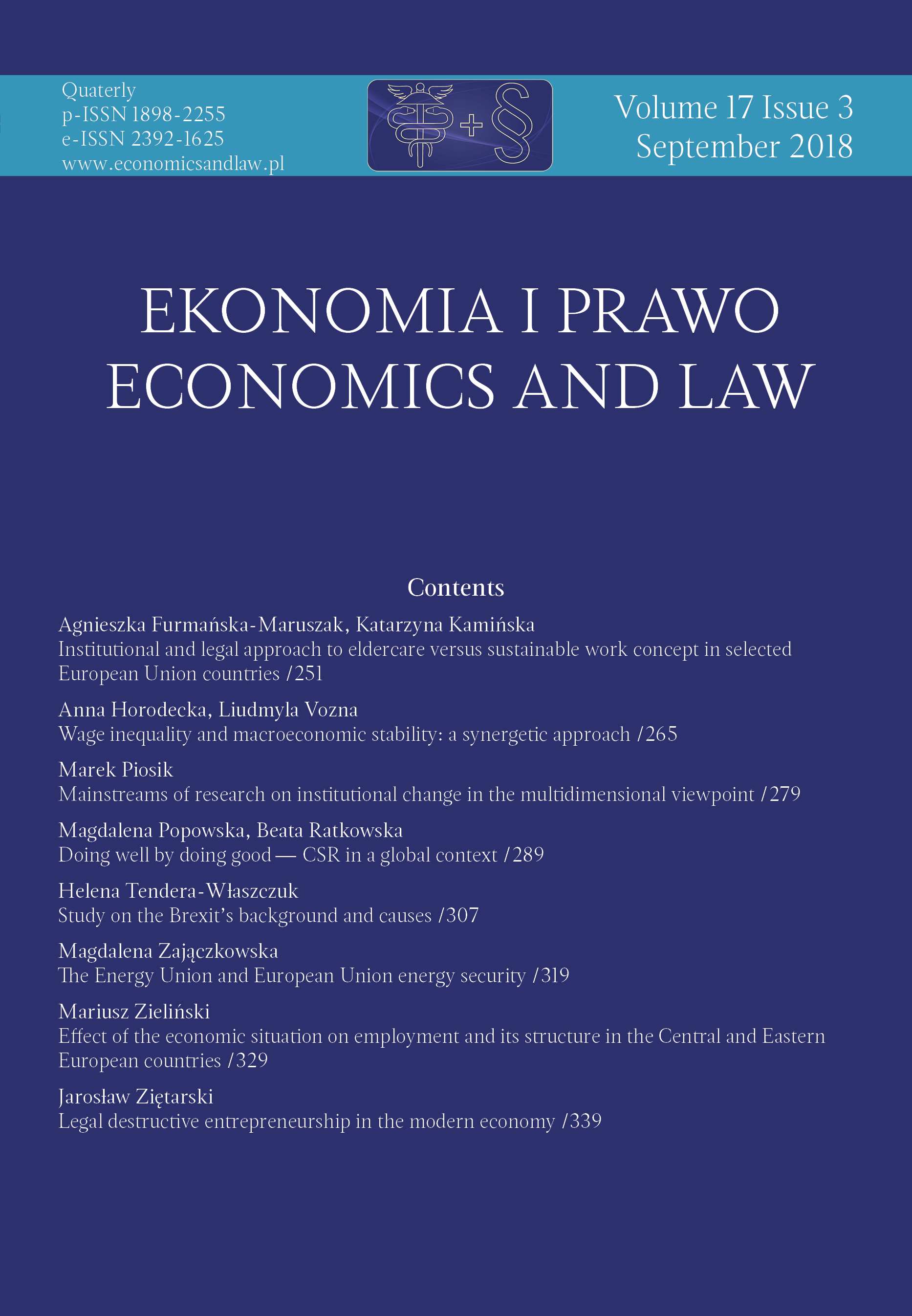Effect of the economic situation on employment and its structure in the Central and Eastern European countries
Effect of the economic situation on employment and its structure in the Central and Eastern European countries
Author(s): Mariusz ZielińskiSubject(s): Economy, Socio-Economic Research
Published by: Wydawnictwo Naukowe Uniwersytetu Mikołaja Kopernika
Keywords: economic growth; employment; discrimination on the labour market; Central and Eastern European countries; European Union
Summary/Abstract: Motivation: The Central and Eastern European countries suffered from a decrease in professional activity and increases in unemployment, income inequality, and underemploy-ment. In most of the countries in the region, it was decided to increase labour market flexi-bility, adopting a Western European model of labour market functioning. The effects of deregulation (flexibility increase) for the labour market depend to a great extent on the economic situation. Aim: The paper attempts to answer the question of the degree to which changes in the employment level and structure can be explained by changes in the econom-ic situation. The article verified two hypotheses: ‘the employment level reacts to changes in the economic situation; however, this reaction in the Central and Eastern European coun-tries is more severe than the average reaction in the European Union’ (H1) and ‘changes in the economic situation determines to a very large extent the employment level in the groups experiencing discrimination (women, youngest and oldest people) more than for employees in general’ (H2). Results: In the majority of the examined countries, a statisti-cally significant correlation occurs between changes in GDP and total employment level; but for all analysed countries as a whole, the influence of changes in GDP on the employ-ment level is not greater than the European Union’s average. The data do not indicate discrimination against certain groups (women, young people, people in pre-retirement age), changes in the employment levels of the aforementioned groups are less dependent on the economic situation than the changes in total employment.
Journal: Ekonomia i Prawo. Economics and Law
- Issue Year: 17/2018
- Issue No: 3
- Page Range: 329-337
- Page Count: 9
- Language: English

